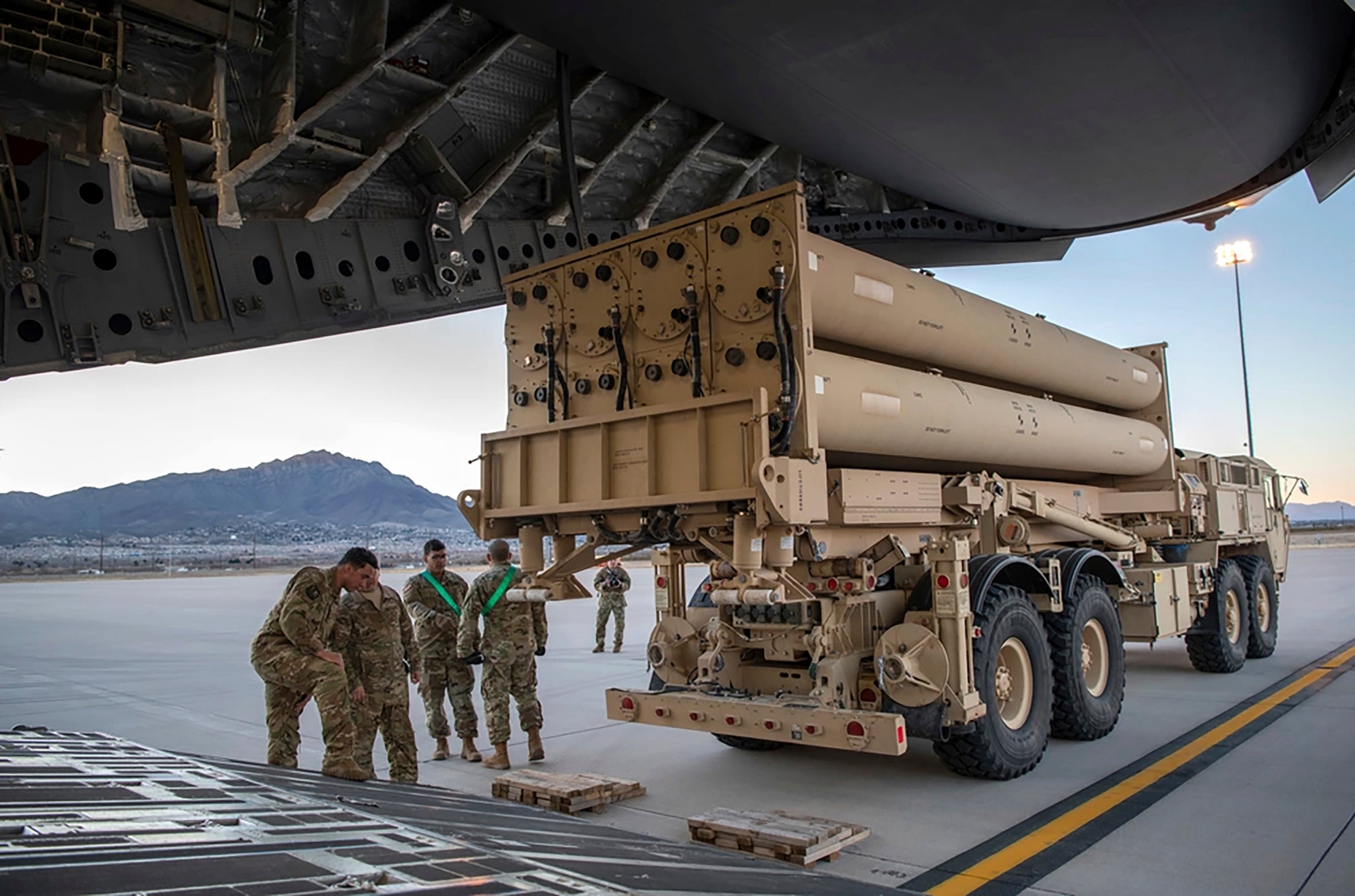THAAD missile system: What is the defence system sent by US to Israel to assist in Middle East conflict?
Missile defence system to be operated by US troops in a departure from Israeli military policy
US soldiers have launched high-tech interceptor missiles from inside Israel for the first time since the system was deployed earlier this year.
Footage on social media showed what security sources later confirmed as the firing of a Terminal High Altitude Area Defense (THAAD) battery missile to intercept a Houthi attack from Yemen early on Friday.
After the missile is fired, an American soldier can be heard saying: “Eighteen years I’ve been waiting for this.”
The Israeli military confirmed only that an interception had taken place, but security sources told news site Walla that THAAD had been responsible.
The Pentagon announced it would be deploying its THAAD battery to Israel, along with roughly 100 soldiers, to operate it in an effort to bolster Israel's air defence system amid fears of a wider conflict in the Middle East.
The announcement followed a call between president Joe Biden and Israel's prime minister Benjamin Netanyahu to discuss Israel's retaliation against Iran's 1 October attack when it rained nearly 200 missiles on Israel.

Despite Israel housing some of the best air defences in the world, its anti-missile systems failed to deter drone attacks by Iran-backed Hezbollah, which have killed dozens in the north of the country since last October. A Hezbollah airstrike on an Israeli army base on Sunday killed at least four Israeli soldiers and injured dozens in one of the deadliest strikes in a year, underscoring the potential need for greater protection.
Mr Biden said the US was sending THAAD to "defend Israel" from further airstrikes, without providing information on when the system would be moved. US officials said it would take a number of days for the system to be moved from the continental US to Israel and for American soldiers to arrive.
Israel’s military in the past acknowledged that its expensive multilayer air defences, which included the celebrated Iron Dome, can be overwhelmed if a large number of projectiles are fired simultaneously.
The THAAD is a critical part of the US military’s layered air defence systems, which usually require about 100 soldiers to operate.
The system would be operated by American troops in a departure from Israeli military policy, Bloomberg reported.

The system, made by America’s biggest arms maker Lockheed Martin, is designed to shoot down short, medium and intermediate-range missiles at high altitudes.
A THAAD battery consists of six truck-mounted launchers with eight interceptor missiles on each launcher and a powerful radar. Reloading each launcher takes about 30 minutes, according to reports.
The system is equipped to communicate with a range of US missile defences, including Aegis systems and Patriot missile defence systems.
THAAD doesn't carry explosive warheads and instead destroys targets using kinetic energy with the help of its accurate radar system.
The battery's radar operates in two ways. The radar is configured to track targets at ranges up to 3,000km and in its terminal mode it is aimed upward to acquire targets during their descent, CCN reported.

The US Army currently has seven THAAD batteries, which are deployed in conflict zones as part of its defensive strategy, according to a report by the Congressional Research Service.
THAAD would add as a further “deterrent” to an attack and not act alone in defence of Israel, said Cedric Leighton, a former US Air Force colonel and CNN military analyst.
“When it is put in place, it will actually add a layer to the existing Israeli air and missile defences,” he added.
The Pentagon said a THAAD was deployed to southern Israel for drills in 2019, the last and only time it was known to be there.
“Everybody wants US Army air defence forces,” Army chief of staff General Randy George said on Monday at the Association of the US Army’s annual conference. “This is our most deployed formation," he said.
Israel has been escalating its campaign against Hezbollah with waves of heavy airstrikes across Lebanon and a ground invasion at the border after a year of exchanges of fire. Israel is now at war with Hamas in Gaza and Hamas’s ally Hezbollah in Lebanon.
US army leaders on Monday said the deployment of THAAD will add to already difficult strains on the army’s air defence forces and potential delays in modernising its missile defence systems.
“The air defence artillery community is the most stressed. They have the highest ‘optempo’ really of any part of the army,” US Army secretary Christine Wormuth said, using a phrase that means the pace of operations.
“We’re just constantly trying to be as disciplined as we can, and give Defence Secretary (Lloyd) Austin the information he needs to accurately assess the strain on the force when he’s considering future operational deployments,” she was quoted by the Associated Press as saying.
Deployment of THAAD adds to what has been growing tensions within the US defence department about what weapons Washington can afford to send to Ukraine, Israel or elsewhere and the resulting risks to America’s military readiness and its ability to protect the nation.
“We need to be able to bring these units home to be able to go through that modernization process,” Ms Wormuth said.
“So we’re trying to lay that out for Secretary Austin so that he can weigh those risks – essentially current versus future risks – as he makes recommendations to the president about whether to send the Patriot here or there.”
Join our commenting forum
Join thought-provoking conversations, follow other Independent readers and see their replies
Comments
Bookmark popover
Removed from bookmarks